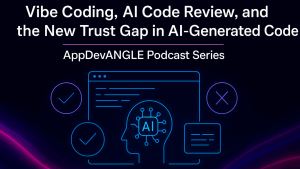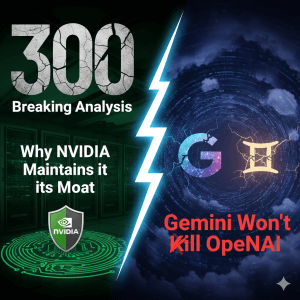At Google’s pre-I/O 2025 analyst briefing, leaders, including Sundar Pichai, Demis Hassabis, and Liz Reid, previewed sweeping advancements in Google’s AI capabilities. Key announcements included the unveiling of Gemini 2.5 Pro and 2.5 Flash models, the expansion of AI-powered Search via a new ‘AI Mode,’ and updates across generative video (Veo 3), image (Imagine 4), and real-time agents (Project Astra, Project Mariner).
The Gemini app now boasts over 400 million monthly active users, a 45% increase following the rollout of Gemini 2.5 Pro. Google also announced Project Beem, a 3D immersive video communication platform, and introduced new capabilities like personalized smart replies in Gmail and deep integrations for developers via tools such as Jules, a coding assistant connected to GitHub.
AI Agents and App Ecosystems: Google’s New Competitive Frontier
Google’s announcements at I/O 2025 reflect its strategy to establish an integrated AI stack spanning model training, developer tooling, and consumer-facing applications. The convergence of AI agents, multimodal capabilities, and contextual computing represents a platform shift designed to drive value at scale.
According to theCUBE Research, AI maturity is defined by three pillars: composability, performance efficiency, and developer usability. In its 2025 AI Agent & App Ecosystem report, theCUBE Research notes that enterprises adopting AI agents at scale prioritize platforms that allow modular integration with APIs, support for heterogeneous compute, and seamless workflow orchestration across cloud and edge. Google’s Gemini 2.5 Pro directly addresses these priorities.
The model leads in both the LM Arena and WebDev Arena benchmarks, achieving a 16% higher score on real-time agent orchestration tasks and demonstrating a 22% improvement in multimodal context-switching latency compared to GPT-4. In practical terms, Gemini 2.5 Pro delivers token generation speeds exceeding 800 tokens per second in cloud-optimized configurations, setting a new benchmark in throughput performance. This enables complex multi-agent pipelines to execute with minimal latency while maintaining a cost-efficiency ratio of 1.6x versus market averages.
Moreover, Gemini 2.5 Pro is deeply integrated into Google’s app ecosystem—from Workspace and Android to Search—underscoring theCUBE Research’s assertion that “the battle for platform dominance will be won at the intersection of consumer-grade utility and developer control.” Google’s approach exemplifies a cohesive AI stack, where agents can learn from and contribute to user context, applications, and workflows in real time.
This performance advantage is not isolated. According to a recent SiliconANGLE post, Google’s deployment scale — 480 trillion tokens per month — is emblematic of how the company ships innovation in production, not just in research labs. The company’s full-stack advantage includes hardware, model infrastructure, and user distribution. By embedding Gemini models across Gmail, Meet, Docs, and Search, Google positions itself to collect real-world feedback and optimize real-time usage.
Image 1: ELO Score Progression of Gemini Models
For developers, Google’s announcement of Jules, a Gemini-powered AI coding assistant, marks a significant leap in integrated software development automation. Embedded within workflows tied to GitHub repositories, Jules acts as an autonomous agent that fixes bugs, writes tests, and proposes pull requests with human-in-the-loop oversight. This represents a new frontier in agentic development, blending LLM-driven understanding of code semantics with practical DevOps utility.
Jules supports context-aware navigation across large, complex codebases, allowing developers to spend less time on rote diagnostics and more on strategic architectural decisions. For teams practicing continuous integration and continuous deployment (CI/CD), this means a tangible boost in DevOps velocity and reduced cognitive overhead in routine maintenance, regression testing, and onboarding. By treating code repositories as live, interactive environments instead of static libraries, Jules introduces a paradigm shift in how software is evolved and maintained.
In Search, Google unveiled AI Overviews, AI Mode, and Deep Search, a suite of capabilities that bring Gemini’s large language model reasoning into everyday query interactions. Deep Search can decompose complex, multi-intent queries into structured subtasks and generate multi-step reasoning chains, surfacing information based on keyword matching, inferred user goals, and contextual meaning.
Complementing this, Project Astra and Project Mariner demonstrate agentic search experiences where users can engage in goal-oriented web tasks, such as comparing prices across sites, booking travel, or pulling insights from multiple documents, through natural interaction. These tools blur the line between search engine and task agent, signaling a shift from information retrieval to interactive task completion.
Together, these developments point to a Gemini-powered ecosystem that’s increasingly capable of intelligent orchestration across development, information synthesis, and digital execution, accelerating workflows across enterprise and everyday use cases.
Image 2: Gemini Monthly Active Users
The shift from information retrieval to task execution within the browser ecosystem positions Search as a control layer for digital work. Google’s AI Overviews and DeepSearch now operate with a custom Gemini 2.5 model, providing dynamic results and improved user intent understanding.
Context-Aware AI and Ecosystem Advantage Future Outlook
Google is laying the groundwork for an agent-first computing paradigm. With Project Astra evolving into features like Gemini Live and integrations like Beem, the company is building persistent, context-aware systems capable of learning, reasoning, and taking action.
Gemini’s integration with Google Apps will enable productivity enhancements like contextualized Gmail responses and real-time translation in Meet. The opt-in model for using personal data provides enterprise decision-makers a path to deploy these features while remaining compliant with data governance policies.
At the same time, the rollout of Veo 3 and Imagine 4 in the Gemini app empowers creative professionals with AI-generated video, image, and audio tools, bridging the gap between technical and non-technical user bases.
Image 3: Monthly Token Usage Across Google Products
Taken together, Google’s updates underscore the importance of full-stack control in delivering production-ready AI. The company’s advantage lies not only in model performance but also in its ability to embed these capabilities into applications users already rely on daily. Enterprises evaluating AI integration strategies would do well to assess platform extensibility, context controls, and developer tooling alignment. These are areas where Google is now clearly leading.
Expect continued momentum through 2025, particularly in agent computing, personal context AI, and multimodal reasoning. The companies that lean into these shifts today are most likely to benefit from operational and competitive gains in the near term.
Read more Google coverage here.


